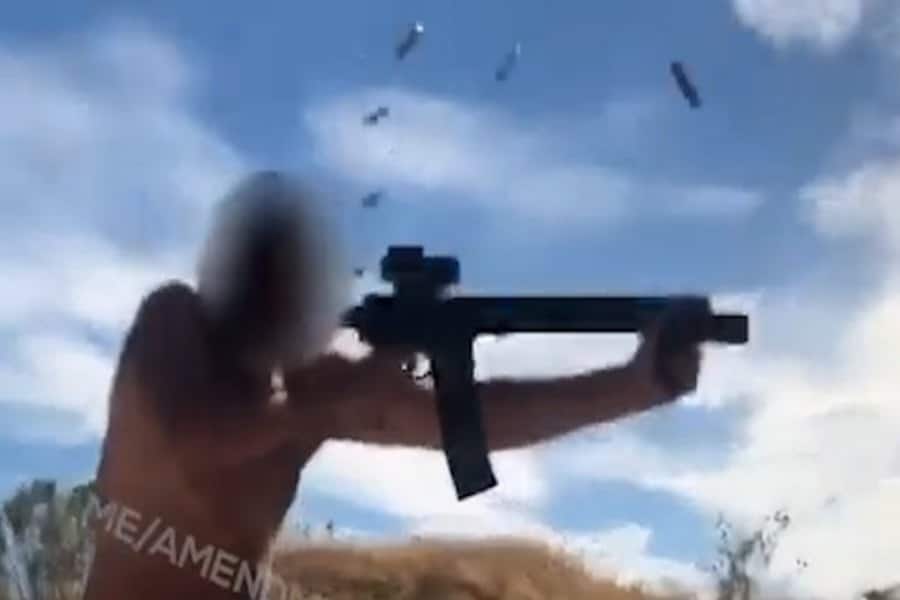
Hayden Espinosa, 24, Charged with Selling Firearms and Parts via Online Channel Promoting Extremist Beliefs
In a disturbing case that highlights the intersection of gun violence, trafficking, and extremist ideologies, a recently released federal inmate, Hayden Espinosa, has been arrested again for operating a black market gun trade while still incarcerated. Espinosa, 24, had been serving a sentence in a Louisiana federal prison for previous gun charges when he allegedly continued his illegal activities using a smuggled phone.
Espinosa’s arrest follows an extensive investigation by city and federal agencies, including the New York Police Department (NYPD) and Homeland Security Investigations (HSI). He is charged with moderating a Telegram channel named “3D Amendment,” which authorities describe as a hub for 3D printing and trading firearms and gun modifications, including illegal machine gun conversion devices known as auto sears.
Previous Convictions and Continued Criminal Activities
Espinosa’s criminal history includes a conviction in 2021 for 3D printing and selling gun parts through the mail in Texas. Despite being imprisoned in Pollock, Louisiana, he allegedly managed to smuggle cellphones into his cell, which he used to continue his illegal trade. The Telegram group he moderated was not only a marketplace for firearms but also a platform promoting neo-Nazi and anti-government ideologies.
His activities came under scrutiny again during an investigation into a mass shooting at a Buffalo grocery store in May 2022. The shooter, Payton Gendron, was found to be a member of the 3D Amendment Telegram group. Gendron, who killed 10 Black people and injured three others in the racially motivated attack, was sentenced to life in prison last year. Authorities discovered Espinosa’s continued involvement in illegal firearm sales while investigating the Buffalo massacre.
Upon his release from prison on June 4, Espinosa was immediately re-arrested by Louisiana deputies on new charges. Manhattan District Attorney Alvin Bragg highlighted the dangerous combination of gun violence and extremist beliefs, stating, “We see this sad and tragic combination far too often.”
Undercover Operations and Illegal Sales
While still behind bars, Espinosa allegedly sold firearms, silencers, and auto sears to an undercover NYPD officer who was monitoring the Telegram group. He reportedly shipped these items through the U.S. Postal Service, with photos on the 3D Amendment Instagram page showing packed and labeled parcels. In August 2023, he sold two auto sears to the undercover officer and attempted to sell a Glock-19 handgun a few weeks later. In November, he sold two silencers, further implicating himself in ongoing illegal activities.
Rebecca Weiner, the NYPD Deputy Commissioner of Intelligence and Counterterrorism, stated that the investigation, which led to Espinosa’s latest charges, began in the summer of 2023. It was discovered that Espinosa was using cellphones smuggled into prison to facilitate the sales of firearms and parts to members of the Telegram channel.
Extremist Ideologies and Online Activities
The Telegram channel moderated by Espinosa was a focal point for racially and ethnically motivated extremism. It included images of paramilitary groups outside the United States dressed in fatigues and saluting Hitler. Members of the group were motivated by neo-Nazi and white supremacist ideologies and espoused accelerationism, a belief that promotes violence as a means to create a new extreme-right society.
Espinosa also posted content on YouTube that promoted neo-Nazi and anti-government ideologies. This content, along with his activities on Telegram, highlights the role of online platforms in the spread of extremist beliefs and the organization of illegal activities.
The Biden administration has identified racial extremism as the greatest domestic threat facing the United States. In June 2021, the administration unveiled a 32-page strategy to combat this threat, which included measures such as hiring more intelligence analysts and screening government employees for ties to hate groups. President Biden emphasized the importance of addressing this issue, stating, “We cannot ignore this threat or wish it away.”
Legislative and Law Enforcement Responses
District Attorney Bragg emphasized the need for urgent legislative action to address the growing threat of unregistered “ghost guns,” which can be assembled from 3D-printed parts or purchased online. The NYPD has recovered a significant number of these firearms in recent years. In 2018, officers recovered 17 ghost guns, but by 2022, that number had increased to nearly 400.
Bragg’s office created a ghost-gun initiative in 2020 and has proposed legislation that would outlaw the manufacturing of 3D-printed guns and parts. On Tuesday, Bragg reiterated the urgent need for legislative focus on this issue, stating, “It is time to renew quite urgently the call to focus on that in the next legislative session.”
The NYPD’s Racially and Ethnically Motivated Extremism Unit, which led the investigation into Espinosa, was created in response to the growing threats posed by accelerationism, white supremacy, and Nazi ideology. This unit played a crucial role in identifying the Telegram channel and Espinosa’s involvement following the Buffalo massacre.
The Arrest and Future Proceedings
Espinosa is scheduled to appear in court on June 24 for arraignment on charges that include four counts of transporting a firearm, machine gun, silencer, or disguised gun, and one count of attempted criminal sale of a firearm in the third degree. His contraband cellphones have been confiscated, preventing further illegal activities from behind bars.
Conclusion
The case of Hayden Espinosa underscores the complex and dangerous intersection of gun trafficking, extremist ideologies, and the use of online platforms to facilitate illegal activities. It also highlights the ongoing efforts of law enforcement agencies to combat these threats and the need for legislative action to address the proliferation of ghost guns and other illegal firearms.
As the investigation continues, authorities are focused on dismantling networks that promote violence and extremism, ensuring that individuals like Espinosa are held accountable for their actions. The collaboration between city and federal agencies in this case serves as a reminder of the critical importance of vigilance and coordination in the fight against domestic terrorism and gun violence.
In light of these developments, it is imperative for lawmakers to prioritize measures that will enhance the ability of law enforcement to prevent similar cases in the future and protect communities from the devastating impact of gun violence and extremist activities.








